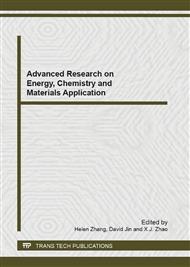p.7
p.11
p.18
p.22
p.26
p.31
p.35
p.39
p.46
Effect of Shear Time and the Crumb Rubber Percentage on the Properties of Composite Modified Asphalt
Abstract:
This paper presents a laboratory study of Styrene-Butadiene-Styrene (SBS)/ crumb rubber modified asphalt by the two-step method. The conventional properties of the modified asphalt were determined. The effects of crumb rubber content and shearing time on the performance of the crumb rubber modified asphalt and composite modified asphalt. The results show that the crumb rubber contents and shearing time have significant impacts on the performance of the modified asphalt. With the crumb rubber content increasing, the high temperature performance was improved and the low temperature chanethe softening point increases and penetration decrease, and the ductility change little. It is comfortable for workability at the crumb rubber content of 20%. The viscosity is an important measurement for the workability of the modified asphalt. After adding the stabilizer, the viscosity increases until the shearing time reaching 1.5h, then it will decrease gradually.
Info:
Periodical:
Pages:
26-30
Citation:
Online since:
November 2013
Authors:
Keywords:
Price:
Сopyright:
© 2014 Trans Tech Publications Ltd. All Rights Reserved
Share:
Citation:


